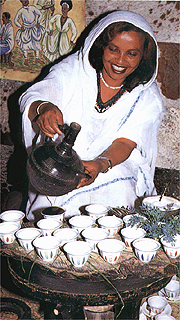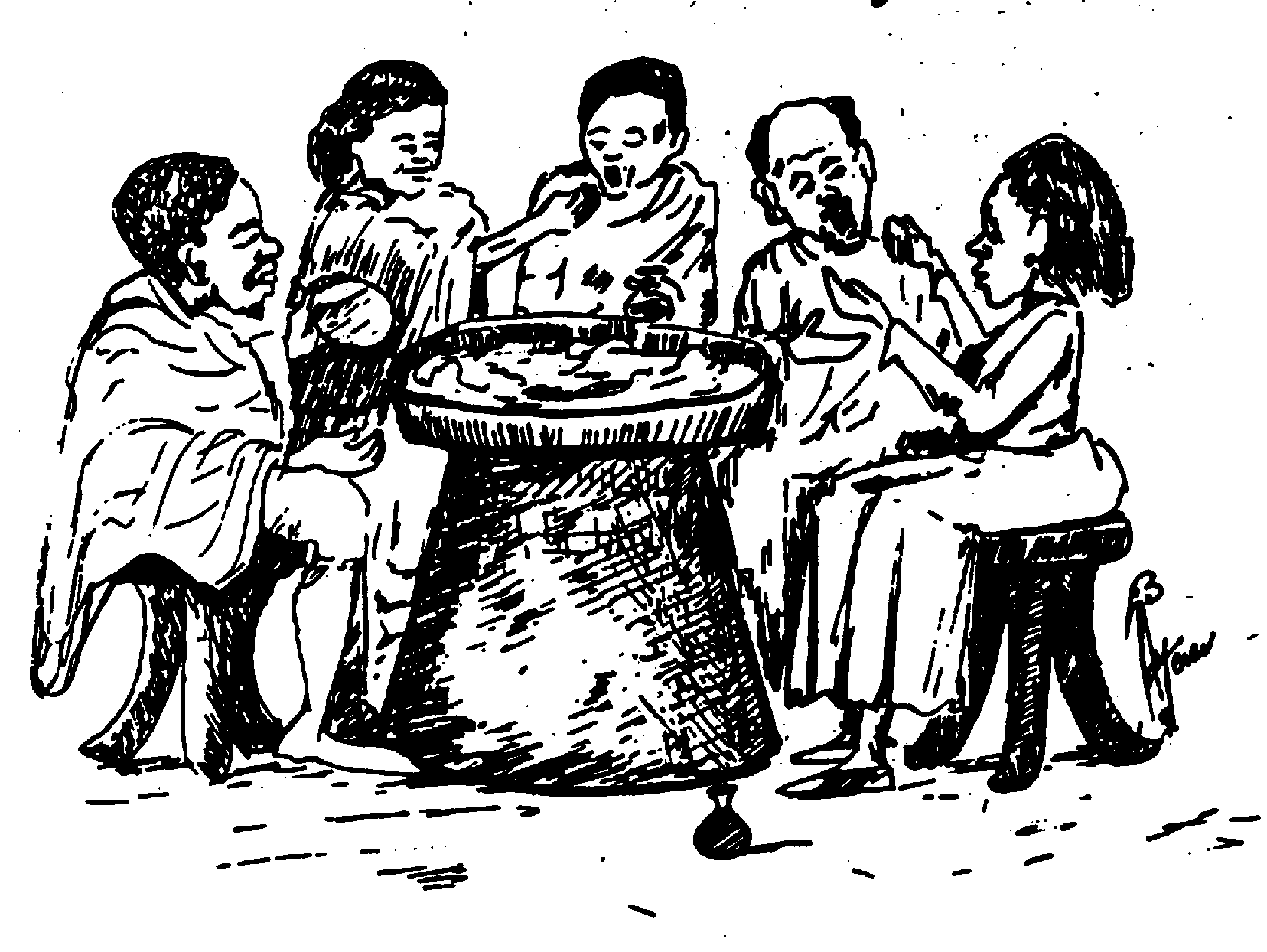Food and Drinks
The national dish for most Ethiopians is injera, a flat, sour dough pancake made from a special grain called teff, which is served with either meat or vegetable sauces. Ethiopians eat these injera by tearing off a bit of injera and uses it to pick up pieces of meat or mop up the sauce. Berbere, the blend of spices which gives Ethiopian food its characteristic taste can be hot for the uninitiated, although vindaloo or hot curry fans will not have any problem.
When eating national food Ethiopians eat together, off one large circular plate. Visitors and guests will have choice morsels and pieces of meat placed in front of them, and when eating doro wot, chicken stew, the pieces of meat are eaten last, after filling up on injera and sauce. You eat with your right hand, and should always wash your hands before eating.
Vegetarians should try "fasting food", what Orthodox Christians eat during Lent and other fasting periods, and which is free of meat and animal products.
Ethiopia produces its own wines - Dukam and Goudar are two good, dry reds. Crystal is a dry white wine and Axumite is a sweet red - and spirits, like gin, ouzo and brandy. There are also traditional alcoholic beverages such as tela (a local beer made from grain), tej (honey wine or mead) and kati kala (distilled liquor).
Restaurant prices can vary from 3 birr in the cheaper restaurants to around 25 to 30 birr per head in a restaurant with national music and dancing. Prices do not generally include drinks.
Coffee
 Ethiopia is the home of coffee. An intricate traditional coffee ceremony is performed in many households. This may also be seen in most of the larger hotels in Addis Ababa. The time devoted to the ceremony indicates how important the drink is to Ethiopians.
Ethiopia is the home of coffee. An intricate traditional coffee ceremony is performed in many households. This may also be seen in most of the larger hotels in Addis Ababa. The time devoted to the ceremony indicates how important the drink is to Ethiopians.
At the start of the ceremony a table is scattered with freshly-cut grass to give the fresh and fragrant scent of outdoors. A female attendant or the lady of the household sits on a low stool beside a charcoal brazier. She first lights a stick of incense to provide the right atmosphere. Guests are given a snack such as popcorn whilst the ceremony is proceeding. The green coffee beans are roasted in a pan and then ground with a pestle and mortar. Then the pot for boiling the coffee is produced, a round clay pot with a plump base and a long narrow neck and spout. After the water has been heated the coffee is added and brought to the boil. The coffee is poured into small, traditional cups and sugar is added. The coffee has a full-bodied flavour but it is not itself bitter.
'Women showing their devotion and love to men'

Often women feed the men with their fingers as a mark of love and devotion to them.
